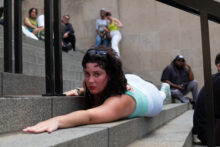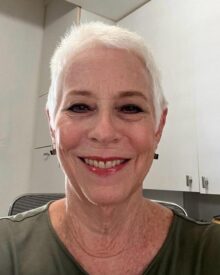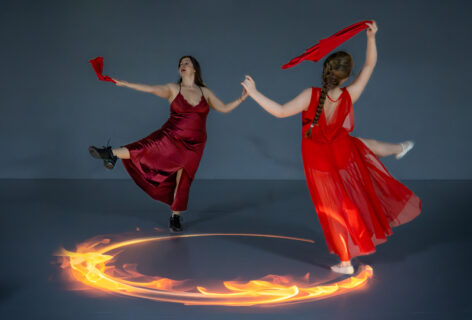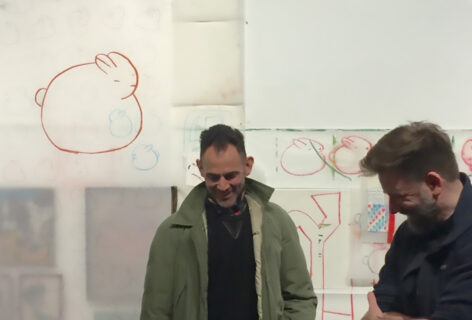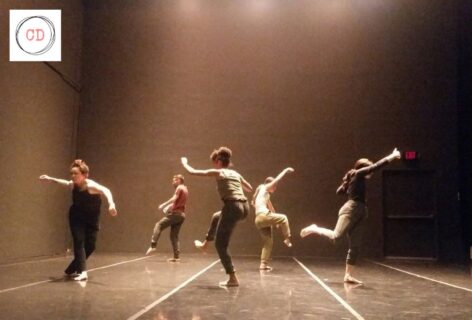This conversation has been edited for the purpose of publication.
In this conversation nibia pastrana santiago and Susan Homar allow us to accompany them while they remember the process of taking on the colossal project of creating a book about dance and experimentation in Puerto Rico. We experience by firsthand how a collective book is made, the creativity, perseverance and labor that is involved in producing it. The editors give us a glimpse of how things happen in the art world in Puerto Rico and how artists and other cultural workers take on projects themselves and make it happen against all odds. The work it took, the visibility and networks it created, and the fact that they published it in two languages, testifies to the amount of spirit it takes to make history count and the courage that is needed in order to inhabit the impossible.
– Nicole Soto Rodríguez, CC Co-editor
nibia pastrana santiago:
I remember that one of the urgent reasons this project emerged was because of the needs I saw in my students while I was coordinating the Dance Program at Universidad del Sagrado Corazón, here in Puerto Rico. The lack of a Puerto Rican dance history book that could serve as reference was one of my first motivations. I reached out to you for this collaboration (back when we didn’t even know that this was going to happen) because we had already started a dialogue about me as a young professor, coming to your house to talk about how to teach and share, and how to have access to this information. I also remember using your writings as a resource for the students to understand a brief history on contemporary or experimental dance in Puerto Rico.
For me this is very important to acknowledge because even with our generational distances or our particular experiences, we came together because you wrote about things that I didn’t even get to see. Now, I can only see pictures, archives, newspapers, with some luck some videos, if they were digitized. This coming together, of you and me, allowed the book to become this project that was not only about the origins of what has been called experimental dance, but about a panoramic view on dance and experimentation in Puerto Rico over the last 40-plus years, because in Puerto Rico we have had an active community or an ecosystem (as you say) producing since the 70’s.
Furthermore, there are important pieces written by you, Susan, in different publications, in the newspapers and in Diálogo. Rarely do students know about this, because there has not been a single specific source that represents these initiatives, movements, projects, and performances. If you wanted to learn about the history of dance in Puerto Rico, you had to go to the library or get close to a particular artist, choreographer, or teacher to learn more about it.
While those are the conditions we face while getting to know the history of our own country or traditions, in this case it became “un motor o un propulsor” for things to develop. So, I think it is part of why it is important for this book to exist.
Susan Homar:
I think there’s two things that we should bring up that you already started with. One is that we were interested in talking about a type of contemporary dance in Puerto Rico that in the last 40+ years is characterized by what the maestras, the originators, called danza experimental or experimental dance. I remember that for us, it was very important to explain that this was our starting point. While there are two books in Puerto Rico about dance companies, none explain a movement, for example. There’s a lot of material, as you say, the bibliography in our book shows how much is in books, in journals and in the newspapers…But the students couldn’t find it online. It wasn’t digitized. So for them it was like it didn’t exist (I had the same problem when I was teaching the dance history course 30 or 40 years ago at the University of Puerto Rico): where could our students find the information when they’re used to finding everything on their phones or through a google search? But more importantly, how were we going to explain this experimentation in dance?
Dancers / movers in Puerto Rico come and go constantly, especially to the US. Some go and stay, or they come back once in a while, others come back to PR and stay. Did we have to explain it as compared to postmodern dance in the United States? Because it isn’t, it’s not derivative. We decided that our book would not be about “experimental dance”, what started to happen in the 70s, but dance and experimentation in Puerto Rico from the 70s on. Explaining it in and of itself, how did these artists see what they were trying to do? Why were they trying to do this? Why were they reacting against our dance scene at that moment (which was basically classical ballet) and how could all the information be brought together? And where?

nps:
When the editorial interest arose in terms of a comprehensive book, we decided to include not only a survey of the development of dance and experimentation but the voices of other people that could collaborate in this gathering of texts and information because the field we study is really based on a community of people, researchers, librarians, interdisciplinary artists, which is also something that happens in Puerto Rico. You have one dance artist that is also a painter or an actor, so how to talk about these eclectic manifestations and decide on some boundaries in order to put a book out on these kinds of topics.
SH:
So we decided that we would have different approaches and many individual voices. It wouldn’t be only our voices and it wouldn’t only be a historical survey. That’s when we started thinking of including essays and that not all of them had to be specifically about dance but about ways to see it and speak of it, a book that would offer interdisciplinary approaches of all sorts. And because some people are curious about dance and experimentation in Puerto Rico but say that they don’t understand it, we talked a lot about who our readers were going to be because we didn’t want the book to be only for students.
nps:
Yes, and I remember thinking of it kind of as an inventory, because part of our conversation was asking ourselves how do we get other people to know about our history and about the artists that are doing all this amazing work when they don’t necessarily have the opportunity to present their work elsewhere?
SH:
By elsewhere we mean outside of Puerto Rico.
nps:
Yes, that’s what I mean.
![[Under a lush green tree sit a group of abandoned automobiles. Javier Cardona in a white tank top with cut-outs and denim jeans presses their left hand into a red car as they extend their limbs in the air]. Javier Cardona Otero, Hasta el cuello, 2016, Gandul community, San Juan, PR. Photo by Ricardo Alcaraz.](https://movementresearch.org/wp-content/uploads/2024/01/IMG_0912-976x652.jpeg)
SH:
We decided on the number of essays, and we ended up having nine, including one of yours and one of mine. And the other seven essays are by dance and other scholars of the arts that are writing from different perspectives and moments in this history. We also decided that we would have artists’ statements, so that those voices could be heard. Then we included Alejandra Martorell’s interviews with the five maestras, the five founding voices and bodies, and their memories, which are part of her project MAPA, which we asked her to edit for the book. When we also realized that we needed an archival bibliographical section, we decided that the book would profit from the voice of someone who also came from the dance world. All these different approaches and perspectives, all these different ways of speaking about dance and experimentation, enriched the book’s collaborative approach. The designer and the copy editor for the Spanish edition (the first to come out) completed our editorial team. I remember it being hard work for around three years, when it’s important to say that we were writing some of the sections of the book together, in a back and forth that went from conceptualizing some sections, like the introductions, to actually writing them out and editing them.
nps:
Yes, that’s important to remember, how these divisions by blocks –the artists, the voices, the essays, the MAPA collaboration—became our book!
SH:
Plus the photographs…
nps:
The photographs! How could we produce a book about dance without images? That was another issue to figure out, to see how we could complement all these various sections. So, Alberto Rigau, our designer, helped us imagine ways in which it all became tangible and now, reflecting back on that moment, I think it ended up being great because the book also challenges something else: the presentation of the material doesn’t have to be in a chronological order. It doesn’t have to be this traditional way of making sense of dance, which is also something that we wanted to challenge.
Now the book is out, we have it here, in Spanish and in English! And there’s space for more, which is very important for us too. When we talk about the book it is about a beginning because the purpose of the book is also to stimulate more research and more ventures in performance. Or finding answers to questions or provoking more and more questions on what has happened in choreography, or maybe (me) by reading the book, I find myself craving more about improvisation. So there are initial pushes for themes and topics, but if you, a reader, decided to continue following the work of an artist that is in the book, you are going to have a whole world open before you and you will get to know their aesthetics, their politics or the work that they do with their community. It is there within reach, what I’m trying to say is: el libro tiene tela para cortar.
SH:
And everybody was so generous. Everyone who wrote, including the artists with their statements, kept saying, “but I don’t write, I don’t write” and we kept saying, “yes, you can write, you can write”. Also, when we started asking for photographs and we had hundreds of photographs to choose from to end up deciding on 120 or so, people were so generous. The artists were generous but also just random people who happened to take pictures of the artists in the 70s or in the 80s on the streets and the walls of Old San Juan. Or other people like Ricardo Alcaraz, who has been doing this for 30 years, he just went into his archives and gave us photographs and also forced us to choose from a lot of wonderful pieces. Everybody has been so willing to collaborate. Every time we would ask for more, or ask for this or ask for that, everybody was there for us.
![[A view of two pages from the book Habitar lo imposible depicting text conversation between Myrna Renaud and Alejandra Martorell as well as a black-and-white image of Myrna Renaud]. Photo courtesy of the editors.](https://movementresearch.org/wp-content/uploads/2024/01/IMG_0913.png)
nps:
So how did we produce this book? Let’s talk about that because we had the idea, we had collaborators, everybody was willing, but where would we find funding for a project like this? And who would publish it? Which press could possibly be interested in publishing something like this that is not literature, or poetry or sci-fi? Who would be interested in publishing this compilation of dance history, of something that has no precedent? So that was a whole other labor of love that we had to work on together. And I think this echoes the way in which artists produce their own performance and dance projects in Puerto Rico. It’s self-produced! We wrote a proposal and a budget for the Fundación Puertorriqueña de las Humanidades, that now goes by Humanidades Puerto Rico. And it was immediately approved!
SH:
Yes, the arm of the National Endowment for the Humanities in Puerto Rico.
nps:
Then we found an ally in Beta-Local, which was the organization that said yes to this project along with Humanidades Puerto Rico. Beta-Local has been working for over 10 years supporting artistic endeavors, research, and practices. They said yes to us because they believed in the project, and we needed a fiscal sponsor. All of this is part of the behind-the-scenes administrative work of the book, on top of all the curating, collaborating, and reaching out. What I want to say (now, looking back) is that it was hard labor, a lot of work to produce a book that is as big as it turned out to be. And I’m reminded of it because of the photos: when we started asking for them it was 2020, the year of the pandemic. So everybody was home-bound and people had time to look through their archives, go back and select photographs. That was a whole learning experience for us on how to ask for permission, reach out to photographers from New York, or other people that had photos from the 80s… Handling all of that was also a lot of work.
SH:
Yes! And we thought in the beginning that we would get this book out in one year! We realized it’s much harder. In the beginning we thought we would have a bilingual book and then it started getting too long; then someone who might have been an editor said, “no, the book is going to be too big, too heavy, too expensive”, so that made us rethink it because we also didn’t want the book to cost too much. In the end we decided to do a Spanish edition and publish that one first, and then we could work on an English version that would come out after the Spanish edition. And it also came out in 2023, at the end of the year!
nps:
With the University of Michigan Press.
![[Karen Langevin wearing a blue jumpsuit and pink sneakers hoisting diagonally against a concrete brick wall]. Photo by Mariana Belaval](https://movementresearch.org/wp-content/uploads/2024/01/Karen-Langevin-Re-Viento-2018--976x1236.jpg)
SH:
Under the auspices of the Dance Studies Association and their collection Studies in Dance: Theories and Practices. A wonderful experience and an honor to have been selected!
nps:
Yes, I think it’s like therapy to talk about it. Like there were a lot of things that we had to juggle and learn on our way, because in the end we ended up publishing the Spanish version with Beta-Local. They launched a new publishing house because we couldn’t find an established one to take on this project. Also, because books, well, you don’t make money with books, and our purpose was not to make money with it. But what I’m trying to say is that we had funding for this project with the Humanidades Puerto Rico subsidy so, in the end, the Spanish version of the book is available for free, it’s a limited edition of a thousand books that can be free thanks to other funds that came from the Mellon Foundation.
SH:
And from the Institute of Puerto Rican Culture.
nps:
And to have photographs in the book in color, that was another conversation, with the costs of ink and paper! We had to pay a lot of attention to details. And the one thing I could say is that we survived and remained engaged because we believe in the importance of this project to exist and to bring together different generations, artists, and thinkers.
SH:
And also scholars.
nps:
And I am hopeful that all of this work has some resonance because I think it’s important to recognize and celebrate what the people that came before us, our ancestors in experimental dance, have done. And to acknowledge the fluxes of the diasporic dynamics that is part of Puerto Ricanness, in order to grow and do new things and also be able to talk about the past.
For me it is exciting for young or emerging artists to have this book. It has been my experience, especially with young people, or artists, that when they receive the book they get excited. And they tell me that they’ve been looking for a book like this. So for me those tiny moments are joyful, really joyful moments.
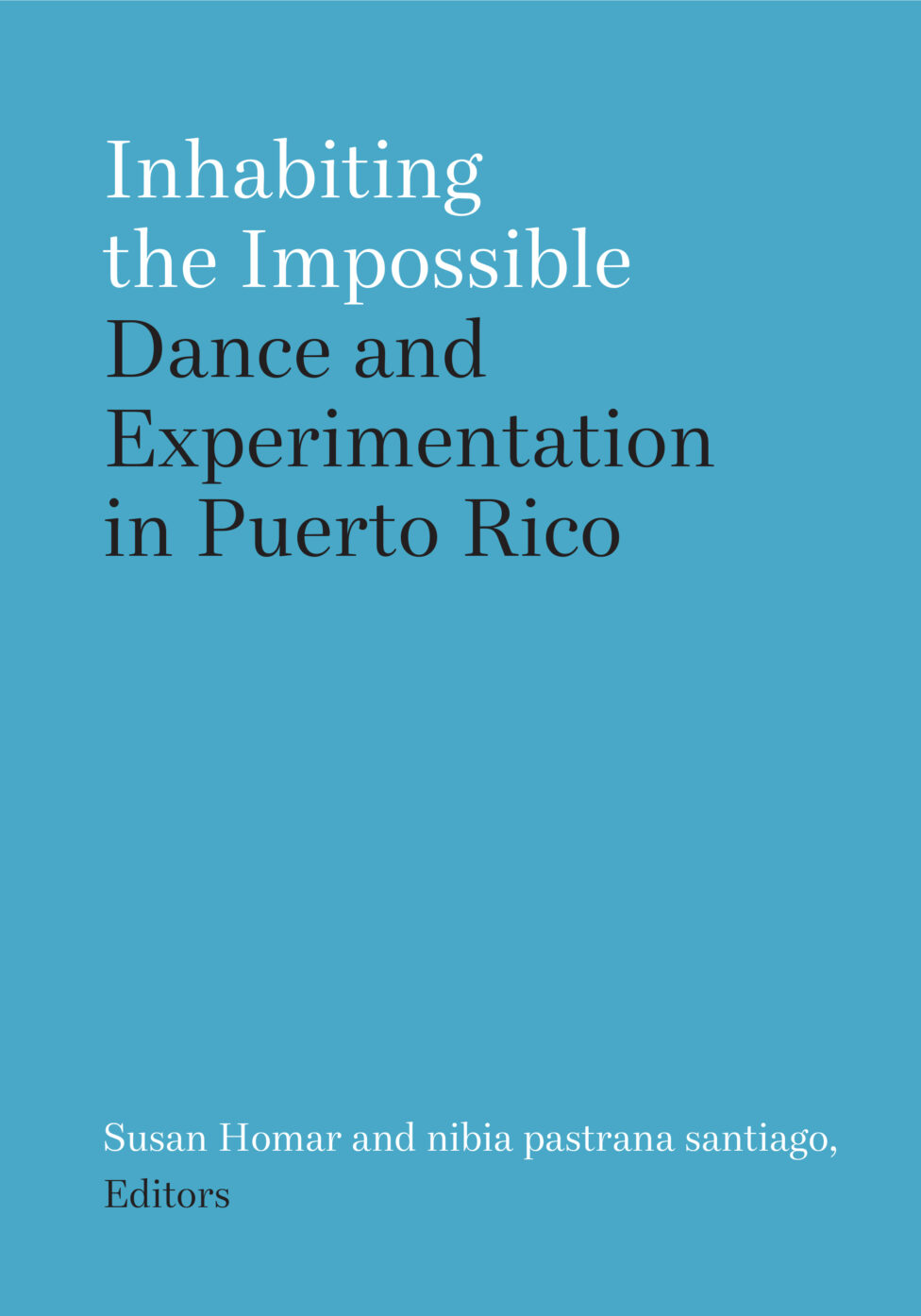
Footnotes
To know more about the editors or to get a copy of the book visit the following links:
https://repeatingislands.com/2023/04/06/new-book-on-dance-habitar-lo-imposible/

![[A group of artists wearing modern clothing embrace each other as they stand on a stage with joyous expressions on their faces. Two people cradle copies of the book Habitar lo Imposible: Danza y experimentación en Puerto Rico in their hands]. Artists and collaborators at the book presentation in March 2023, Teatro Julia de Burgos, Universidad de Puerto Rico. Photo by Thais Llorca](https://movementresearch.org/wp-content/uploads/2024/01/IMG_0908-976x644.jpeg)

